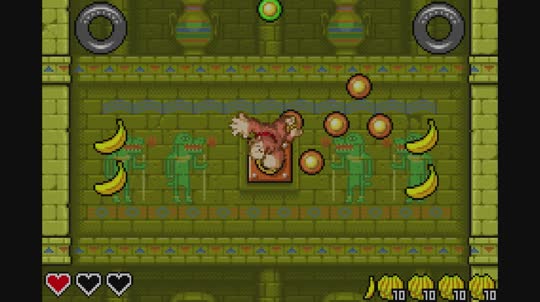
Upon releasing the shoulder button, Donkey Kong will leap in the direction he’s facing. Holding the L or R button causes the gorilla to hold onto a peg and spin counterclockwise or clockwise, respectively.

Respectively, they correspond to Donkey Kong’s left and right hands, and each stage demands you alternate between pressing them as you climb floating pegs. It and Jungle Beat both employ unorthodox control schemes, with Swing ’s revolving around the Game Boy Advance’s L and R buttons. Rare complemented each Country title with a Game Boy followup, an example King of Swing unintentionally sort of follows. And third-party studio Paon helmed three humble Donkey Kong spin-offs (among other collaborations with Nintendo), the first of which we’re discussing today. One of Rare’s teams developed imperfect ports of the Country trilogy and Diddy Kong Racing for Nintendo’s handhelds. Bandai Namco made three Donkey Konga rhythm games. A number of other studios worked on the property during the Aughts, too.

Nintendo brought it in-house for Jungle Beat, the series’ big, mainline GameCube outing, and an arcade-era throwback in Mario vs. Those intervening years were a strange time for Donkey Kong. Both games are lean and thoroughly explore their core mechanics.



 0 kommentar(er)
0 kommentar(er)
